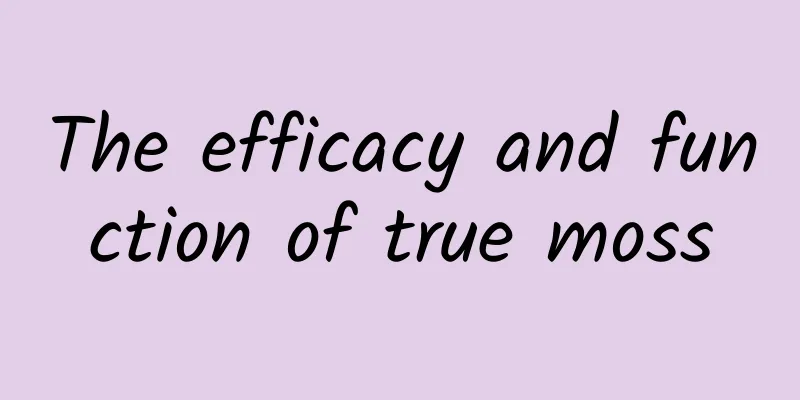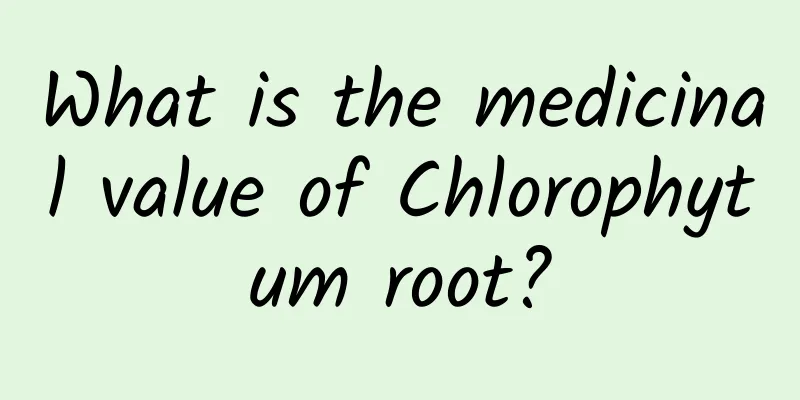Is wild ginseng better or human ginseng?

|
The living conditions of modern people have greatly improved. More and more people have begun to pay attention to health care and hope to use various precious nourishing ingredients to improve their physical fitness. For example, ginseng is a very precious medicinal material with strong nourishing effects. It is very suitable for improving physical fitness. However, there are many types of ginseng, including wild ginseng and human ginseng. Let's take a look at whether wild ginseng or human ginseng is better? 1. Different morphological characteristics 1. Wild ginseng: The rhizome (reed head) is short, erect or slanting upward, and does not thicken into a block. The taproot is enlarged, spindle-shaped or cylindrical. The aboveground stem is solitary, 30-60 cm high, with longitudinal stripes, glabrous, and with persistent scales at the base. The leaves are palmately compound, with 3-6 leaves arranged in whorls at the top of the stem. Young plants have fewer leaves; the petioles are 3-8 cm long, with longitudinal stripes, glabrous, and without stipules at the base. 2. Ginseng: The stem is erect, cylindrical, and unbranched; the one-year-old plant has only one leaf at the top of the stem, with three leaflets; the two-year-old plant still has only one leaf, but with 5 leaflets; the three-year-old plant has two opposite compound leaves with 5 leaflets; the four-year-old plant increases to 3 whorled compound leaves; the five-year-old plant increases to 4 whorled compound leaves; the six-year-old plant has 5 whorled compound leaves at the top of the stem. 2. Different effects 1. Wild ginseng: greatly replenishes vital energy and strengthens the functions of human organs. It can produce fluid to quench thirst, produce essence and strengthen yang. Produces blood and replenishes blood, nourishes the skin and beautifies. Refresh the mind, calm the nerves, improve brain thinking ability and enhance memory. Anti-fatigue, anti-aging, anti-cold, anti-high temperature, anti-cancer and disease prevention. 2. Ginseng: Ginseng can regulate the balance of the excitatory and inhibitory processes of the central nervous system; it can prevent and treat acute and chronic altitude sickness caused by hypoxia; ginseng preparations can increase the uptake of glucose in the rabbit brain, while reducing the ratio of lactic acid, pyruvic acid and lactic acid/pyruvic acid, and can convert the utilization of glucose from anaerobic metabolism to aerobic metabolism; it can increase the enzyme activity of the liver in metabolizing various substances, enhance the liver's detoxification ability, and thus enhance the body's tolerance to various chemicals. |
<<: Sophora flavescens can improve immunity
>>: Can I still drink Panax notoginseng powder if it is expired?
Recommend
What are the effects of chrysanthemum liver-nourishing tea?
Shanju is a traditional Chinese medicine and also...
The efficacy and function of curly Veronica
Veronica curly is one of the common traditional C...
What is Cistanche deserticola
Maybe you have never even heard of this name, Cis...
Introduction of Scutellaria baicalensis, Coptis chinensis and Phellodendron chinense
Scutellaria baicalensis, Coptis chinensis and Phe...
The efficacy and function of Cordyceps sinensis flower
Cordyceps sinensis is a fungus of the ergot famil...
The efficacy and function of false konjac
Everyone is familiar with the false konjac, of co...
Muscovite: thin and hazy thousand-layer paper, mica screen with deep candlelight
This issue introduces a white mica specimen from ...
Weekly Achievement Award丨Nano-confined catalysis—great achievements in a very small space
The use of raw materials such as coal and petrole...
The efficacy and function of mullet tail
Speaking of croaker tail, many people know that i...
What are the effects and contraindications of the drug?
In modern society, people attach great importance...
Effects and functions of Yuling paste
Yuling Paste mainly has the effect of nourishing ...
Stick to your dreams and strive for excellence - Proposal to women scientists nationwide
China Association for Science and Technology Wome...
Don't eat too much pre-made egg liquid, but the problem is not the 20 food additives...
“Why use semi-finished products when two eggs and...
The efficacy and function of Piper longifolia
Long-fruited Piper gracile is a very good medicin...
What’s so special about weather events that have “numbered identities”?
Numbering is one of the ways to mark and identify...









